
Yuccas Around Las Vegas, Vegetation Around Las Vegas
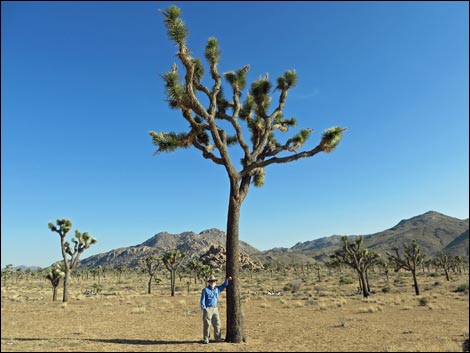 Western Joshua Trees (Yucca brevifolia) Relatively tall in stature, first branches begin high above the ground |
Joshua trees (Yucca sp.) are the signature species of the Mojave Desert: if you see Joshua trees, you are in the Mojave Desert -- no questions asked. Joshua trees are a major component of the "lower" Upper Sonoran (Mojave Desert Scrub) life zone, and they extend into the "upper" Upper Sonoran (Pinyon-Juniper Woodland) life zone. Recent research has shown that there are two species of Joshua Trees. In the southern and western Mojave Desert, Western Joshua Trees (Yucca brevifolia ) grow tall and straight, with long leaves. In the eastern portion of the Mojave Desert, Eastern Joshua Trees (Yucca jaegeriana) grow shorter with more branches (sometimes shrub-like), and the leaves are shorter. There are many other differences between the two species including flower shape, fruit shape, and even different species of pollinators. Link to distribution map. |
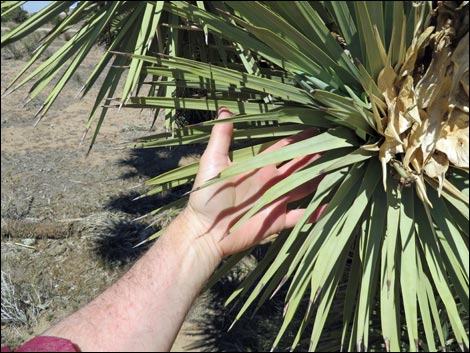 Western Joshua Trees (Yucca brevifolia) Long leaves |
Family: Agave (Agavaceae). Other Names: tree yucca, joshua tree yucca. Western Joshua Tree (Yucca brevifolia brevifolia). Eastern Joshua Tree (Yucca brevifolia jaegeriana). Plant Form: Upright, many branched tree. Height: Usually 15 to 20 feet, maximum to 30 feet. Trunk: Generally 12-15 inches diameter, to 3 feet; brown, rough, and furrowed. Young trunks and stems covered with dead leaves. Leaves: Long (usually 8-10 inches, to 14 inches) and narrow, straight, pointed tip, toothed margins, dark green. Live leaves clustered at the ends of branches in dense rosettes; dead leaves stay attached for years and cover the trunk and stems. Flowers: Pale, greenish-white, waxy, bell shaped, to 3.5 inches long. Flowers clustered on stalks (to 1.5-feet long) at the branch tips. Blooms in the spring. Seeds: Small, dark disks held inside green seedpods. Seedpods about 1.5 inches wide and 4 inches long. |
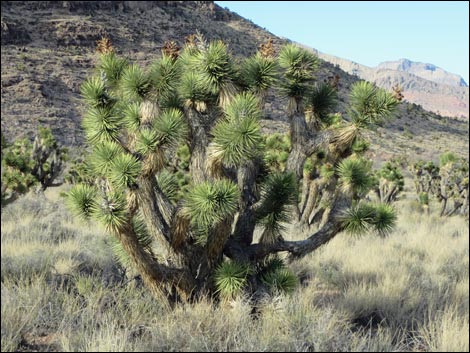 Eastern Joshua Tree (Yucca jaegeriana) Relatively short in stature, first branches close to the ground |
Elevation: 2,000 to 5,000 ft. Occasionally found at higher elevations. Comments: Joshua trees are said to have gotten their common name from Mormon settlers who likened the tree to the biblical prophet Joshua with his arms uplifted towards the sky in prayer. Joshua trees can live to 300 years. Joshua Trees are pollinated by Tegeticula moths (family Prodoxidae), commonly known as Yucca Moths. Eastern Joshua Trees are pollinated by Eastern Joshua Tree Moths (Tegeticula antithetica), and Western Joshua Trees are pollinated by Western Joshua Tree Moths (Tegeticula synthetica). Many species of wildlife use Joshua trees. In places where Joshua trees are the only "trees" around, woodpeckers drill nest holes into the trunks, holes that are then used by other nesting birds in later years. Desert Night Lizards depend entirely on Joshua trees and other yuccas, living only under the bark and in the dead trunks of these species. Desert Woodrats often nest in the hollow trunks of dead Joshua trees. |
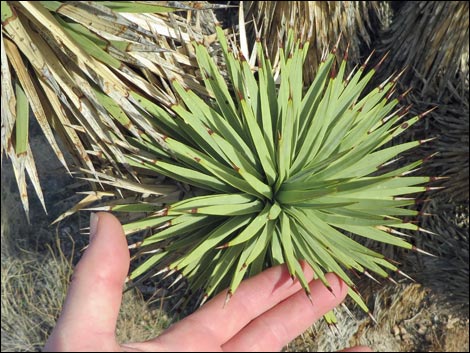 Eastern Joshua Tree (Yucca jaegeriana) Short leaves |
During drought and other times of water stress, Desert Woodrats sometimes chew off the leaves of Joshua Trees. Sometimes the cut leaves are left on the ground, other times they seem to have been chewed or eaten, and sometimes they are used to armor woodrat nests. During severe droughts, such as the years 2000 to present, but especially starting in about 2020, Desert Woodrats and Black-tailed Jackrabbits, but even Feral Horses and maybe White-tailed Antelope Squirrels, have been chewing the bark off of Joshua Trees to get at the moisture underneath. This has resulted in the death of tens of thousands of Joshua Trees across the Mojave Desert. In response to the drought, the distribution of Joshua Trees seem to be moving north and to higher elevations, places with more moisture that southern and lower elevation areas. There are places along the northern boundary of the Joshua Tree distribution where one can look south or downhill and see lots of big, old Joshua Tree, but turning around to look north and uphill, one sees nothing but juvenile Joshua Trees. |
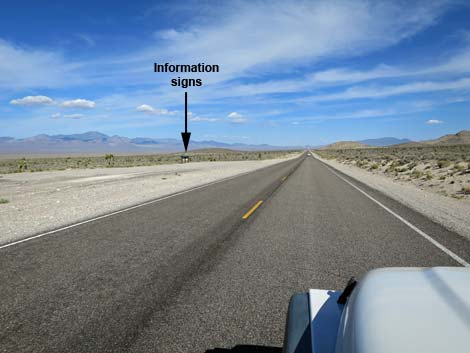 Highway 375 northbound approaching information signs (view NW) |
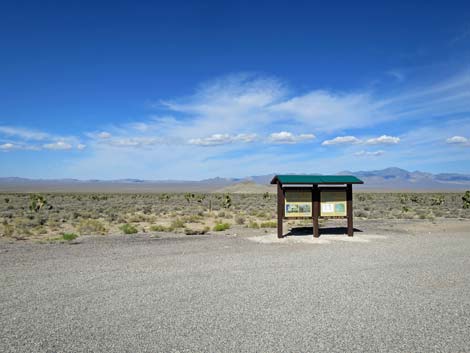 Information signs (view NW) |
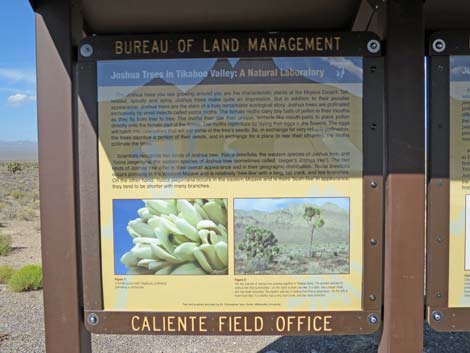 Information about two kinds of Joshua Trees and a hybrid zone Information about two kinds of Joshua Trees and a hybrid zone |
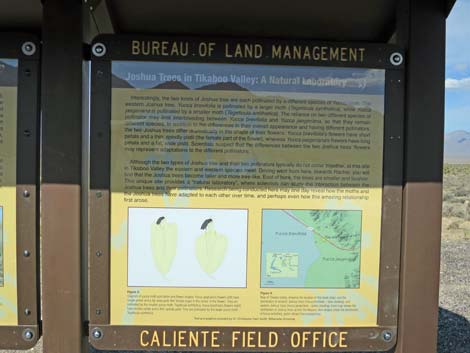 Information about two kinds of Joshua Trees and a hybrid zone |
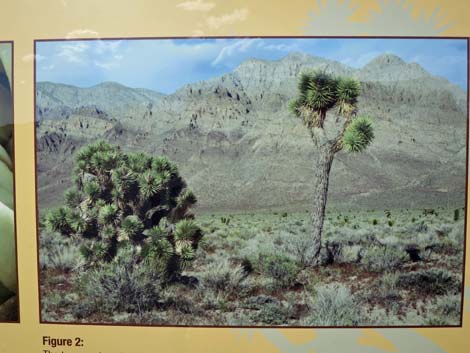 Two kinds of Joshua Trees: short and bushy; tall and tree-like |
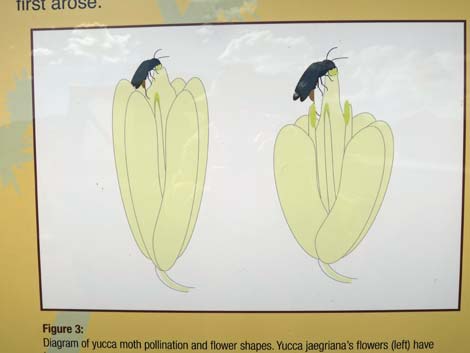 Different pollinators, one for each kind of Joshua Tree |
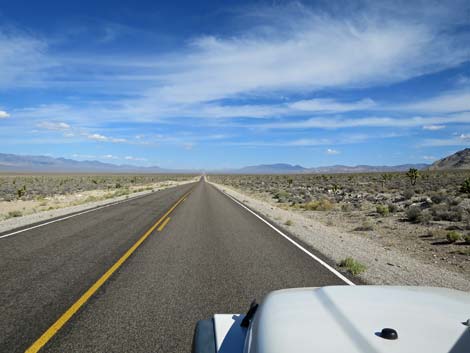 Highway 375 northbound heading into hybrid zone (view NW) |
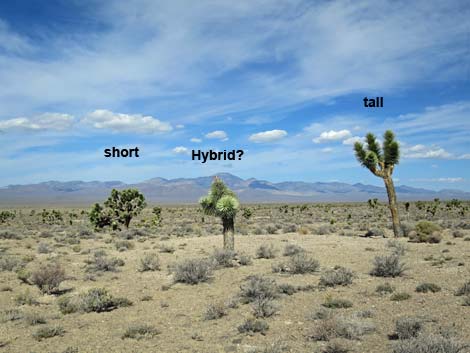 Two kinds: short and tall Joshua Tree, plus hybrids |
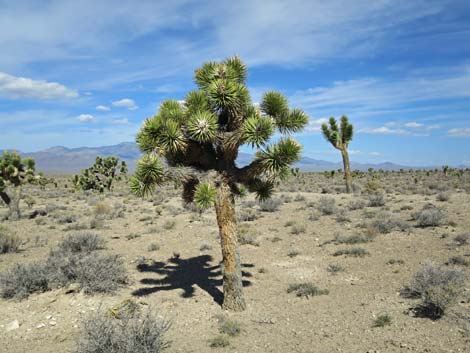 Hybrid: tall with short leaves |
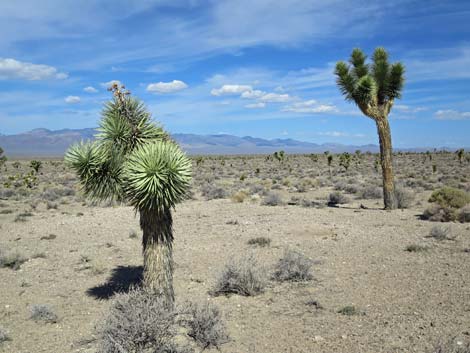 Hybrid: tall with short leaves |
 Hybrid: short with long leaves |
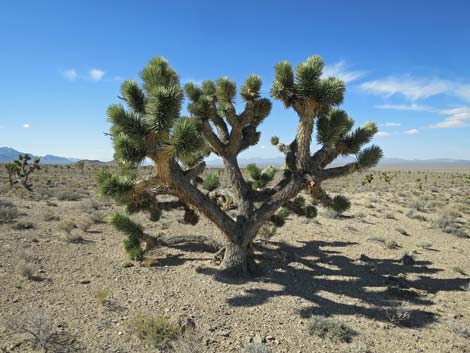 Hybrid: short with long leaves |
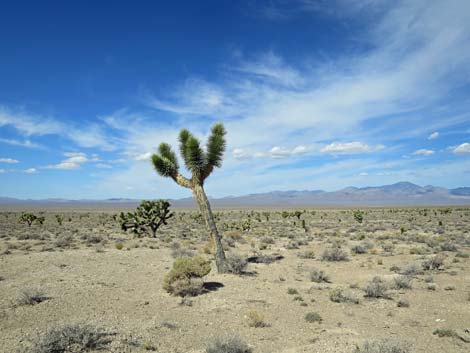 Hybrid: tall with short leaves |
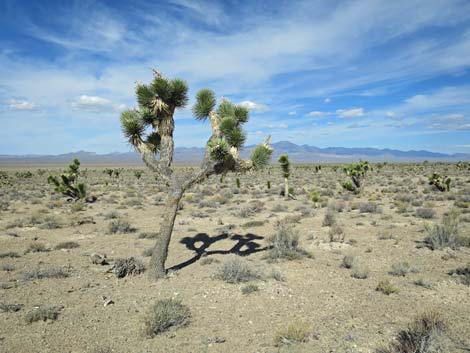 Hybrid: tall with short leaves |
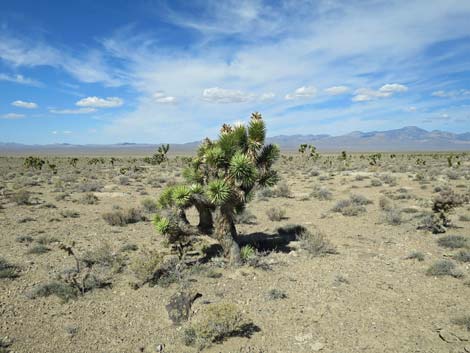 Hybrid: short and stumpy with long leaves |
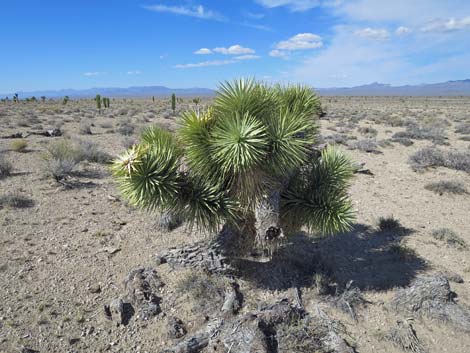 Hybrid: short and stumpy with long leaves |
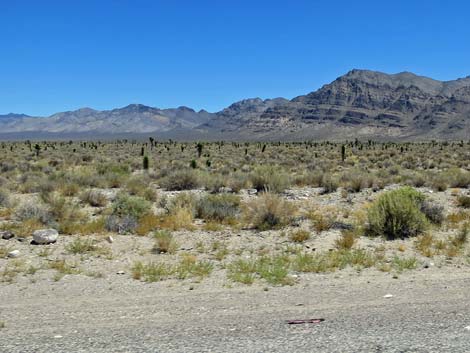 Miles of young Joshua Trees (view N from Hwy 375) |
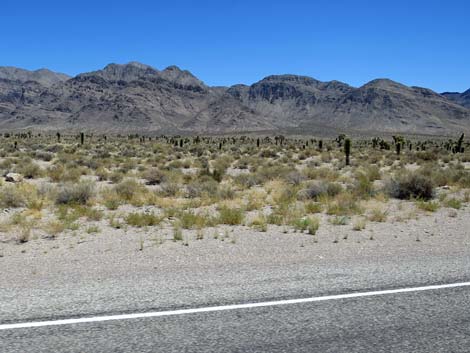 Miles of young Joshua Trees (view N from Hwy 375) |
Note: All distances, elevations, and other facts are approximate. Names generally follow the USDA database.
![]() ; Last updated 250123
; Last updated 250123
| All Yuccas | Plant Species Index | Glossary | Copyright, Conditions, Disclaimer | Home |